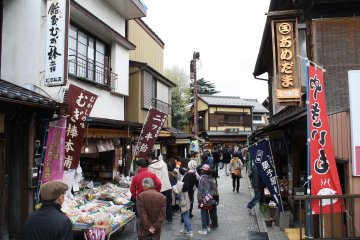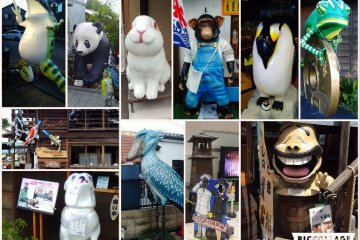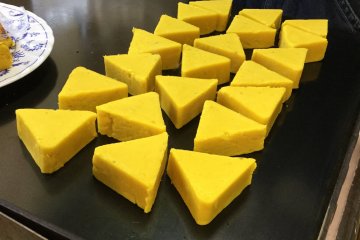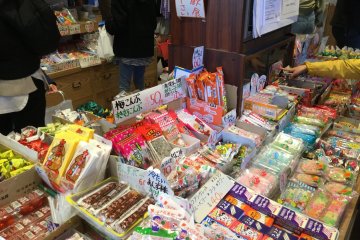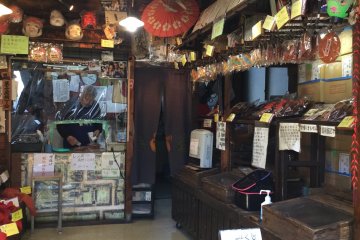The bus we took from Kawagoe Station dropped us off at the 蔵造りの町並み, Kurazukuri no Machinami (Warehouse District) and the driver informed us that 菓子屋横丁, Kashiya Yokochō (Candy Alley) was a five minute walk away. We didn't have a map of the area, but we saw a number of people carrying oversized fugashi (light flaky baked strips of dough coated in brown sugar) as long as baseball bats, all coming from the same direction. Other people bore bags filled with assorted small treats. We knew exactly where to go.
Turning into Kashiya Yokochō, we entered an alley frozen in time. Dating back to the Kansei Era (mid-Edo Period), the number of stores surged after the Great Kanto Earthquake of 1923 when Japanese sweets were in short supply in Tokyo which was devastated by the disaster. Kashiya Yokochō received orders for traditional favorites such as chitose ame (long stick candy given to children for shichi-go-san, 7-5-3), kintaro-ame (small round candy with Kintaro's face on it), mizu yokan (chilled red bean jelly), senbei (rice crackers), and karintou (addicting fried dough sticks dusted with sugar). The Showa Period saw probably the peak of sweets retailers, with over 70 such stores.
Today, about 20 shops remain, still delighting children and the young at heart. Aside from traditional sweets, you can find ice cream, cakes, and more commercial candy, as well as small toys and souvenirs. My kids enjoyed roaming in search of their favorites and because the price was not prohibitive, something new to try.
As if the sweet delights were not enough of a draw, Kashiya Yokochō is a photogenic stone-paved street full of nostalgia. It also also made it to the Ministry of Environment's '100 Scent Sceneries' of Japan.



